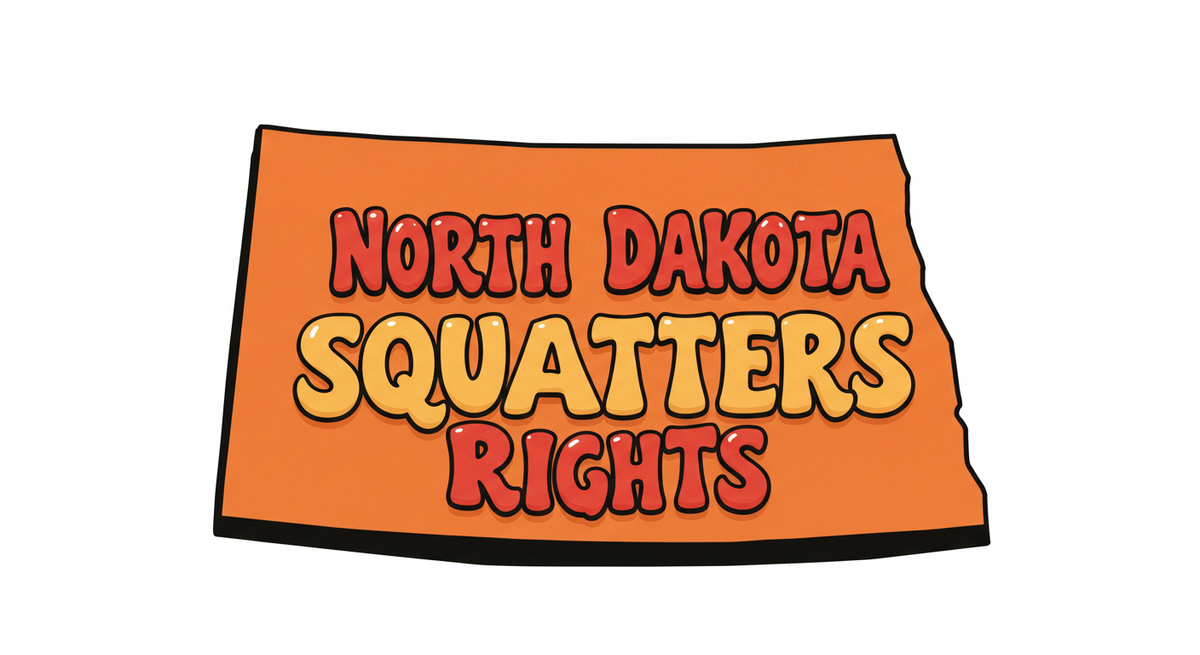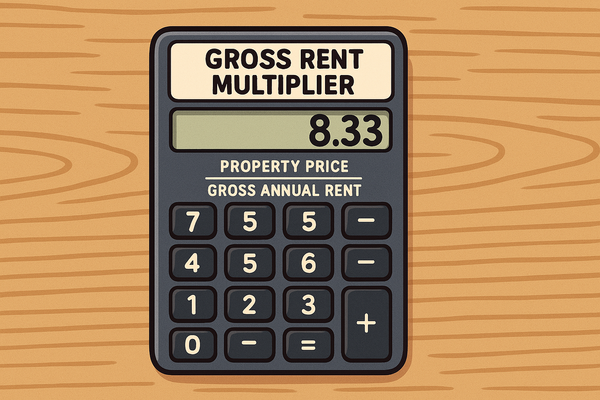North Dakota Squatters Rights Guide: Understanding Adverse Possession Laws
Required occupation period: 20 years in North Dakota (standard requirement), or 10 years if the squatter has both color of title AND has paid property taxes during that period

From the invasion of a Fargo home by squatters three separate times in one year, to incarcerated tenants discovering their apartments occupied by strangers upon release, North Dakota has seen its share of brazen squatting incidents.
Despite the state's 20-year adverse possession requirement—one of the nation's longest—property owners face real challenges from unauthorized occupants who know how to exploit legal loopholes.
This guide examines North Dakota's complex legal landscape surrounding squatters' rights, offering practical strategies for protection and removal while navigating the state's strict statutory framework.
Introduction to Squatters' Rights in North Dakota
- Squatters vs. Trespassers in North Dakota: While both occupy property illegally, trespassers are individuals who enter property without permission for a brief period with no intention of claiming ownership rights, whereas squatters remain on the property for extended periods and may eventually attempt to claim ownership through adverse possession
- Adverse possession in North Dakota refers to the legal process by which a squatter could potentially gain legal title to property after meeting strict statutory requirements
- Historically, adverse possession laws in North Dakota were designed to encourage productive use of land and resolve boundary disputes, not to incentivize the outright theft of real estate
Squatter Snippet: Real Case from North Dakota
In 2023, Grand Forks witnessed a dramatic squatter standoff when Jeffrey G. Tollefson and Skye L. Larson illegally occupied an apartment at 421 First Avenue South. Despite clear "No Trespassing" signs, the homeless pair established residence in unit 8A of a managed property.
When Grand Forks Police arrived to remove them on May 31st, 2023, Larson "violently kicked at officers," transforming a routine trespass situation into a felony confrontation. Both faced criminal trespass charges, with Larson receiving an additional felony charge for preventing arrest.
This case highlights the potential for seemingly simple squatter situations to escalate dramatically and why understanding North Dakota's squatter laws is critical for property owners.
Key Timeline: Statutory Period in North Dakota
- Required occupation period: 20 years in North Dakota (standard requirement)
- Reduced requirement: 10 years if the squatter has both color of title AND has paid property taxes during that period
- Continuous possession requirement: Occupation without significant interruptions
- Comparison with neighboring states:
- South Dakota: 20 years
- Minnesota: 15 years
- Montana: 5 years (with payment of taxes)
- Timeline exceptions:
- Military service of the property owner
- Legal incompetence/disability of the property owner
CHART: Adverse Possession Timeline Comparison
| State | Required Years | Special Conditions |
|---|---|---|
| North Dakota | 20 years (10 with color of title) | Payment of taxes can reduce period with color of title |
| South Dakota | 20 years | Hostile, actual, open, notorious, exclusive, continuous |
| Minnesota | 15 years | Similar OCEAN requirements |
| Montana | 5 years | Must pay property taxes during period |
Quick Guide for Property Owners
North Dakota has one of the longest adverse possession periods in the United States, providing significant protection for property owners compared to many other states. In the notorious 2023 Fargo apartment case, squatters occupied a couple's apartment three separate times in a single year, showcasing the boldness of some unauthorized occupants.
The case culminated in the arrest of Kiawa Butler, Veronica Guerrero, and Arrick Samu and spurred legislative reform. Despite North Dakota's lengthy 20-year statutory period for establishing adverse possession claims, the immediate process of removing squatters still requires judicial intervention, making understanding these laws critical for property owners.
- Know your timeline: Squatters can only claim rights after 20 years of continuous occupation in North Dakota
- Documentation matters: Maintain property records, tax receipts, and regular inspection logs
- Regular monitoring required: Vacant properties are particularly vulnerable to squatters
- Legal obligation: Self-help eviction methods are illegal in North Dakota
- Act quickly: The longer squatters remain, the stronger their potential claim becomes
- Proper notices: Follow legal procedures precisely when removing unauthorized occupants
Prevention: Protecting Your Property
North Dakota property owners face unique challenges due to the state's harsh winters, which can drive homeless individuals to seek shelter in vacant buildings. Court records from recent years show that apartments whose legitimate tenants are incarcerated have become particularly vulnerable targets for squatters.
North Dakota courts place significant weight on evidence of regular property monitoring and security measures when evaluating adverse possession claims, with documented visits and security systems often being decisive factors in rejecting squatter claims.
- Regular inspections:
- Visit property at least monthly (more frequently for vacant properties)
- Document each visit with dated photos/notes
- Effective security measures:
- Secure all entry points with quality locks
- Consider alarm systems and security cameras
- Install motion-activated lighting
- Clear signage:
- Post "No Trespassing" signs visibly on the property
- Mark property boundaries clearly
- Property management options:
- Hire professional management for vacant properties
- Consider short-term rental options for properties that would otherwise remain vacant
- Documentation practices:
- Keep property tax payment records organized and accessible
- Maintain utility connections when possible
- Take dated photographs regularly to document condition and vacancy
CHART: Property Risk Assessment Matrix
| Property Type | Risk Level | Recommended Prevention | Estimated Cost |
|---|---|---|---|
| Vacant Land | Medium | Property markers, regular inspections, "No Trespassing" signs | $500-1,000 |
| Abandoned Building | High | Security systems, sturdy locks, property management | $1,500-3,000 |
| Seasonal Property | High | Remote monitoring, security service, neighbor check-ins | $1,000-2,500 |
| Investment Property | Medium | Professional property management, tenant screening | $1,000-1,500/year |
Removing Squatters: Step-by-Step Process
North Dakota law specifically addresses the removal of unauthorized occupants through NDCC § 47-32-01, which establishes the eviction process for squatters. Unlike some states with expedited procedures, North Dakota requires property owners to follow the standard eviction process, with unauthorized occupation being grounds for eviction under state law.
Self-help evictions can result in legal liability for the property owner, with penalties potentially including treble damages if a court determines the removal was improper. The North Dakota Century Code treats eviction as fundamentally a civil rather than criminal matter in most cases.
- Document the situation:
- Take photos/video evidence of the unauthorized occupation
- Gather property ownership documents and proof of ownership
- Issue a three-day Notice of Intention to Evict
- File eviction complaint with North Dakota District Court:
- Include all required documentation and evidence of ownership
- Pay the required filing fee
- Attend the eviction hearing
- If successful, obtain a writ of restitution (eviction order)
- Have the sheriff enforce the removal, not the property owner
- What NOT to do:
- Do not change locks yourself while squatters are present
- Do not shut off utilities to force them out
- Do not remove squatter's belongings without court approval
- Do not threaten or intimidate squatters
- Do not use physical force to remove squatters
- Timeline expectations:
- Notice period: 3 days
- Court processing: 2-4 weeks
- Eviction enforcement: 1-3 days after judgment
CHART: Eviction Process Timeline
North Dakota's eviction process is governed by Chapter 47-32 of the North Dakota Century Code, which establishes specific waiting periods. According to recent court data, the average processing time for unauthorized occupant evictions is approximately 15-30 days from initial notice to enforcement.
While North Dakota does not offer a specific expedited process for squatter removal compared to standard evictions, the relatively efficient court system generally processes these cases within a reasonable timeframe compared to other states.
[Discovery of Squatter] → [Documentation: 1-2 days] → [Notice to Vacate: 3 days] →
[Court Filing: 1 day] → [Waiting for Hearing: 1-3 weeks] → [Court Hearing: 1 day] →
[If successful, Wait for Writ: 1-3 days] → [Sheriff Enforcement: 1-3 days] → [Property Returned]
Total estimated timeline: 2-5 weeks
Legal Requirements for Adverse Possession
North Dakota courts strictly interpret the "OCEAN" criteria (Open, Continuous, Exclusive, Adverse, Notorious) when evaluating adverse possession claims. The North Dakota Supreme Court has consistently held that the burden of proof lies with the squatter to demonstrate all elements by clear and convincing evidence.
In cases like Benson v. Taralseth (2012), the court emphasized that even minor gaps in the continuous possession element were sufficient to defeat adverse possession claims. North Dakota's interpretation is considered among the strictest in the region.
- Hostile Claim
- In North Dakota, "hostile" means occupation without the legal owner's permission
- Courts look for evidence that the occupation was against the rights of the true owner
- A common misunderstanding is that hostility requires ill will; it simply means unauthorized use
- Actual Possession
- Requires physical occupation and use of the property
- Courts look for evidence of maintenance, improvements, or use consistent with the property type
- Simply claiming ownership without physical presence is insufficient
- Open and Notorious Possession
- Must be visible and obvious to anyone, including the legal owner
- North Dakota courts look for actions that would put a reasonable property owner on notice
- Evidence includes visible maintenance, improvements, and regular presence
- Exclusive Possession
- The squatter must possess the property without sharing possession with strangers or the legal owner
- Must demonstrate sole control over the property
- Allowing others to also use the property weakens this element
- Continuous Possession
- Requires uninterrupted occupation for 20 years (or 10 with color of title and tax payments)
- Even short absences can potentially disrupt the continuity claim
- Seasonal use is typically insufficient under North Dakota law
CHART: Adverse Possession Requirements Matrix
| Requirement | Required in North Dakota? | Evidence Courts Accept | Common Pitfalls |
|---|---|---|---|
| Hostile Claim | Yes | No permission, acts inconsistent with owner's rights | Having any form of permission |
| Actual Possession | Yes | Physical occupation, improvements, maintenance | Occasional visits without actual residence |
| Open & Notorious | Yes | Visible use, improvements visible from public areas | Hiding occupation from public view |
| Exclusive | Yes | Sole control, excluding others | Allowing others to also use property |
| Continuous | Yes | Uninterrupted presence for statutory period | Brief abandonments, seasonal use only |
Frequently Asked Questions
- "Can I remove squatters myself in North Dakota?"
- No, self-help eviction is illegal in North Dakota
- You must follow the legal eviction process through the courts
- "Do squatters have to pay property taxes in North Dakota?"
- Not for the standard 20-year adverse possession claim
- However, paying taxes can reduce the period to 10 years if combined with color of title
- "What's the difference between a squatter and a trespasser in North Dakota?"
- Trespassers: Short-term unauthorized presence without intent to claim ownership
- Squatters: Ongoing occupation with potential adverse possession claim
- "Who should I contact first in North Dakota - police or sheriff?"
- For immediate safety concerns: Police
- For eviction enforcement: Sheriff's office
- "Can squatters claim abandoned property in North Dakota?"
- Yes, if all adverse possession requirements are met for the full 20-year period
- Abandonment may strengthen their claim but doesn't eliminate the time requirement
- "How quickly can I evict a squatter in North Dakota?"
- Typical timeline: 2-5 weeks from discovery to removal
- Factors affecting timeline: court schedule, evidence quality, squatter response
CHART: Decision Tree for North Dakota Property Owners
North Dakota law distinguishes between criminal trespass (NDCC § 12.1-22-03) and civil squatting situations. Recent cases show that North Dakota law enforcement typically treats initial unauthorized entry as criminal trespass, while longer-term occupation without violence is handled through civil eviction.
The Grand Forks Police Department's Standard Operating Procedure directs officers to determine whether the unauthorized occupation has passed the 24-hour mark before deciding whether to treat it as a criminal or civil matter.
Discovered Someone on Your Property
├── Emergency/Dangerous Situation? → Yes → Call Police
│ └── No ↓
├── Recent Entry (Less than 24 hours)? → Yes → Call Police (Trespasser)
│ └── No ↓
├── Evidence of Established Occupation? → Yes → Legal Eviction Process Required
│ └── No ↓
└── Uncertain Situation → Consult North Dakota Real Estate Attorney
Recent Legislative Changes in North Dakota
Senate Bill 2366 was introduced on January 29, 2025, to amend North Dakota's eviction notice law. This bill proposed new requirements for notices of intention to evict, including mandatory information about available legal services in the three-day written notice of intention to evict, as well as contact information for nonprofit organizations in North Dakota that provide legal services and assistance to low-income and elderly residents.
The bill maintained existing provisions about how and when eviction notices can be served, such as allowing notices to be posted on the premises if the tenant cannot be found, and specifying the timeframes for service (between three and fifteen days).
As of February 4, 2025, the bill was reported back with a recommendation not to pass, indicating North Dakota legislators' hesitance to add additional requirements to the eviction process.
- Legislative Trends:
- North Dakota is following the national trend of strengthening property owner protections
- Balanced approach maintains due process while addressing legitimate concerns
- Future legislation likely to further clarify the distinction between criminal trespass and civil squatting
State-Specific Considerations
- Color of Title in North Dakota:
- Definition: A written document that appears to transfer ownership but is legally defective
- Impact on statutory period: Reduces from 20 years to 10 years (when combined with tax payments)
- Documentation must appear valid on its face but contain some unknown defect
- Burden of proof requirements:
- Squatter must prove all elements of adverse possession by clear and convincing evidence
- Higher standard than the usual "preponderance of evidence" in civil cases
- Recent legal developments:
- Increasing court scrutiny of continuous possession element
- How North Dakota differs from neighboring states:
- Longer statutory period than many states
- No tax payment requirement for standard adverse possession claim
- Stricter interpretation of the continuity requirement
CHART: North Dakota vs. Neighboring States Comparison
| Factor | North Dakota | South Dakota | Minnesota | Montana |
|---|---|---|---|---|
| Statutory Period | 20 years | 20 years | 15 years | 5 years |
| Color of Title Impact | Reduces to 10 years | No reduction | No reduction | Required |
| Tax Payment Required | No (reduces period if with color of title) | No | No | Yes |
| Special Conditions | Strict continuity requirement | Similar to ND | Less strict continuity | Must pay taxes |
| Strictness Rating | 4/5 | 4/5 | 3/5 | 2/5 |
Advanced Legal Process
- Court proceedings typically involve presenting evidence of ownership, occupation duration, and the nature of possession
- Evidence requirements include property deeds, tax records, witness testimony, and documentation of property use
- Potential outcomes range from complete dismissal of squatter claims to partial recognition of boundary adjustments
- Monetary judgments may include damages for unpaid rent or property damage
- Impact on property title requires careful legal remediation if adverse possession is granted
- Special provisions exist for legally incompetent individuals, extending the time they have to assert rights
Real-World Examples
- In the 2023 Fargo apartment case, squatters occupied a couple's apartment three separate times, using sophisticated methods to identify when the owners were away
- A 2024 Grand Forks case revealed a pattern of squatters targeting apartments whose legitimate tenants were incarcerated
- A rural North Dakota landowner successfully defended against an adverse possession claim by providing hunting licenses he had issued annually, demonstrating his continued control of the property
Resources
- Current North Dakota Squatters Rights Laws:
- North Dakota Century Code
- Last updated: August 2023
- Recent/Pending Legislation:
- North Dakota Legislative Branch
- Bill status: Regular monitoring recommended for updates
Legal Disclaimer
DISCLAIMER: The information provided in this guide is for general informational purposes only and should not be construed as legal advice on any subject matter. The content contained herein does not establish an attorney-client relationship.
This guide about North Dakota squatters' rights and adverse possession laws is intended to provide general information and should not be relied upon as legal advice. Laws and regulations regarding property rights, adverse possession, and eviction procedures vary by jurisdiction and may change over time. The information presented here may not reflect the most current legal developments or address your specific situation.
No reader should act or refrain from acting based on information in this guide without first seeking professional legal advice. Property owners dealing with squatters should consult with a qualified attorney licensed to practice in their jurisdiction for advice tailored to their particular circumstances.
The authors, publishers, and distributors of this guide expressly disclaim all liability in respect to actions taken or not taken based on any or all of the contents of this document. They shall not be responsible for any errors or omissions in this information or any consequences arising from its use.
This guide is provided "as is" without warranty of any kind, either express or implied, including but not limited to implied warranties of merchantability, fitness for a particular purpose, or non-infringement.
Copyright © 2025 LandlordDoc.com. All rights reserved.





